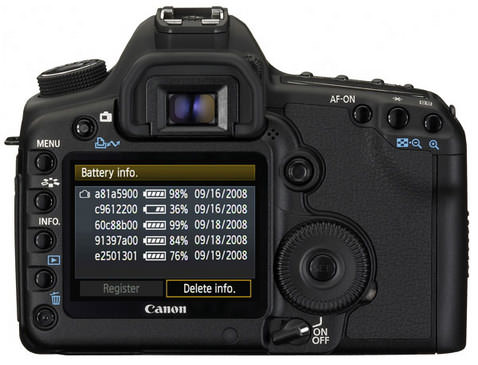Canon wanted nothing more than to assert its pre-eminence among all camera manufacturers when it introduced the EOS 5D Mark II DSLR camera; and the features presented in Part 1 of this PhotographyTalk.com article are proof of the company’s position as the first among many. What is even more telling is that Canon made sure the 5D Mark II was one of the first DSLRs that could shoot high-definition 1080p video; and Part 2 of this article focuses on this capability.

Designing 1080p video capture into Canon’s 5D Mark II and Nikon’s D90, the other pioneer of this feature, has resulted in a proliferation of cameras in virtually every price range that also shoot movies. Various PhotographyTalk.com camera reviews reveal that video in a DSLR has some limitations (depending on the model), so this capability is still not the first choice for many serious videographers, as many of them prefer a separate camcorder. For the great majority of casual moviemakers, however, being able to shoot movies with the 5D Mark II’s large sensor and high quality Canon lenses—and with a camera body and controls they know well—are excellent reasons to buy this camera.
Even video with the 5D Mark II has some limitations, since a number of settings, such as frame rate, at 30 fps, and compression level, are pre-set. Users can choose the size, either 1920 x 1080 or VGA, with a maximum 12-minute clip with the former and 24 minutes with the latter. Movies are recorded in Quicktime MOV format, using H.264 codec for video and PCM for audio. At 1920 x 1080, the bit rate is 38.6 Mbits/sec (approximately 4.8 MBytes/sec); at 640 x 480, it is 17.3 Mbits/sec (approximately 2.2 MBytes/sec).
As on the better DSLRs with video capture, the Canon EOS 5D Mark II records mono audio with a built-in internal microphone; and like many DSLRs, the mono recordings are lacking in quality. There is also a socket for an external microphone to record stereo, plus users are able to listen to their recorded soundtracks during in-camera video playback via a small speaker.
The quality of video shot with the 5D Mark II is indisputably excellent, although, as mentioned above, it won’t sway the more serious videographers to choose this DSLR over a dedicated camcorder. Again, the 35mm, full-frame sensor and the enormous creative latitude it provides for virtually all moviemakers makes the Mark II a great value for its price. On the upside, the video mode (with the aid of the camera’s sensor) in the Mark II isolates subject matter much easier than the smaller sensors in most digital video cameras. On the downside, grain is evident when shooting video with the Mark II in low light.
As with many DSLRs that have video capabilities, the Mark II’s sensor accepts the video image as a series of horizontal lines instead of a simultaneous scan of the entire image. When a subject or object moves quickly and the camera movement is just as quick to follow it, some verticals within the image will become distorted into diagonals. The good news is that this distortion is not as visible on Mark II video as it is on Nikon D90 video; in fact, the Mark II must be panned very quickly to notice the skewed verticals in the image.
Interestingly, the Canon EOS 5D Mark II is a super buy if you were only to shoot serious still photography with it and an equally wise consumer purchase if you used it primarily to shoot video. Of far greater importance is that the Mark II is more than a retread of the legendary EOS 5D. Yes, Canon gave the Mark II a large, new sensor, but it’s the totality of all the other improvements—new menu system, Live View implementation, the sensor shake anti-dust system, the larger and higher resolution screen, a higher capacity battery and extra customizability—that makes it very competitive.
Unlike the EOS 5D, the Mark II must battle the Nikon D700, the Sony Alpha 900 and other high-performance DSLRs. That’s why Canon designed the 5D Mark II with resolution essentially equal to the Alpha 900 and high ISO/noise performance that almost matches the Nikon D700/D3. Then, Canon upped the ante by increasing ISO to as much as 25,600 on the Mark II. Is the Canon EOS 5D Mark II DSLR a perfect camera? Of course, not, none is; but at approximately $2,500 for the body only, this camera has the features, performance and high quality standards that just about any digital photographer would want.
This article about "The Canon EOS 5D Mark II DSLR Camera" was first published on our website here https://www.photographytalk.com/photography-equipment-reviews/1583-digital-photography-equipment-reviewthe-canon-eos-5d-mark-ii-dslr-camera-part-2